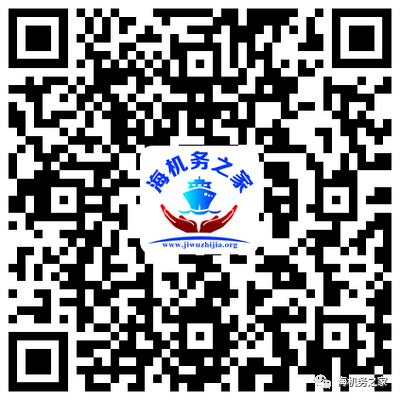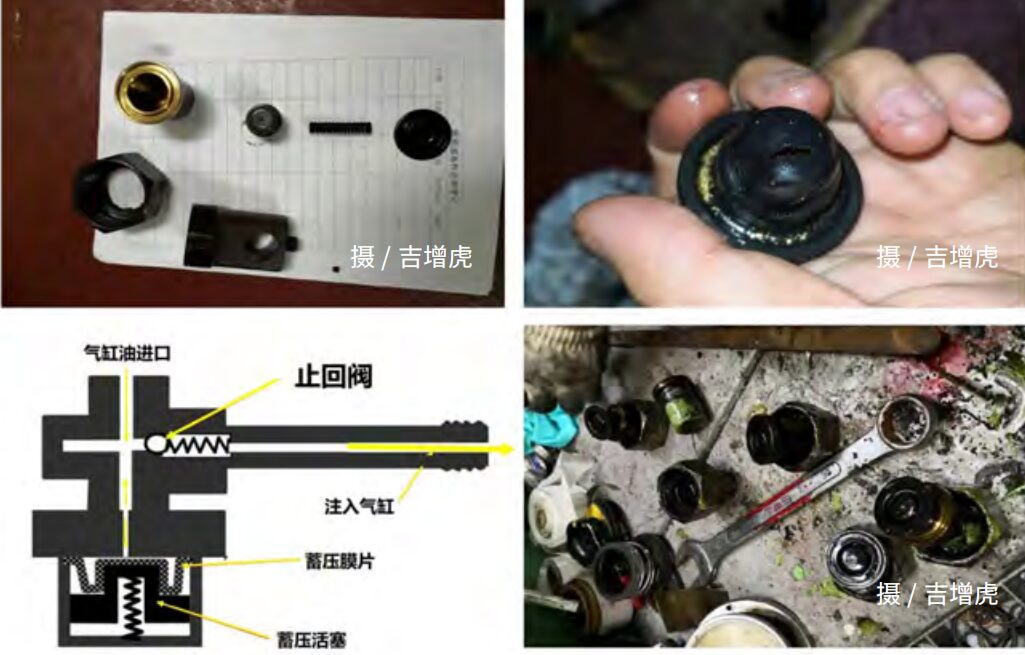Recommended Books
1. Fuel Injection Data – “Maintenance and Management of Intelligent Marine Diesel Engines (Two Volumes)” Principles + Cases
2. “Why This Book is Worth Having for Marine Engineers?”
3. MAN B&W ME-C Monthly Fuel Injection Training Class is Now Open, Details Available via Private Message. Training Location: Shanghai Pudong; Certificate Issued upon Completion. Phone: 15216707893
4. WeChat Store QR Code:


Click the blue text above to follow us
During a voyage, the chief engineer received a call from the duty engineer in the engine room, reporting that the cylinder oil injector at the upper front left of cylinder NO4 of the main engine (SULZER 5RTA 62U) was spraying water and mist from the cooling water jacket, possibly due to aging of the injector cooling water jacket seal ring.
The chief engineer immediately instructed the duty engineer to notify the bridge to reduce speed and consider stopping to anchor for repairs.
Upon arriving in the engine room, the chief engineer found that the main engine had been reduced from full speed to half speed, and observed water spraying from the pressure cap of the injector cooling water jacket on cylinder NO4.
I. Inspection After Stopping
After stopping, the engineer removed the pressure cap from the leaking injector cooling water jacket, pulled out the water jacket, and found that the seal ring was severely aged.
After replacing the seal ring, the vessel resumed sailing, but when the speed was increased to half, the injector end cap again leaked water with no sign of reduction, and the leakage increased with the rise in engine speed.
The chief engineer suspected that a through crack might have developed in the cylinder liner of that cylinder and ordered an emergency reduction to slow forward.
Later, in the central control room, it was discovered that the temperature of the lower part of the piston in that cylinder had reached 90°C, significantly higher than the other cylinders by 20°C.
Thus, the bridge was notified to stop again for inspection.
Inspection revealed abnormal wear on the surfaces of the four piston rings in that cylinder, with all the piston rings compressed in the ring grooves, and the gap of the second piston ring visible to be only half of the normal size.
The chief engineer then consulted the company’s engineering department and organized the engine room personnel to begin emergency repairs on the cylinder.
During the repair, measurements showed that the inner diameter wear of the cylinder liner exceeded the limits, and a through crack was found in the cylinder liner, necessitating a temporary replacement of the cylinder liner.
After completing the cylinder replacement, the new rings and new cylinder liner were properly run in, and sailing resumed. Ten days later, the vessel arrived at the anchorage for refueling, and the chief engineer arranged for the senior oilman to check the condition of the main engine piston rings again. Surprisingly, all the chamfers of the piston rings in that cylinder had worn off, and there were significant signs of excessive wear on the outer surface of the rings and the inner wall of the cylinder liner.
However, the oil injection rate for that cylinder reached 1.1g/kWh, theoretically indicating that the oil injection amount was not insufficient.
The chief engineer immediately reported this phenomenon to the company’s engineering department.
After analysis and judgment by the company, it was suspected that there was a fault in the main engine cylinder oil injection system, with the abnormal wear of the main engine piston rings and cylinder liner in recent times being fundamentally caused by poor cylinder sealing, allowing gas to escape downwards, which damaged the cylinder liner.
It was suspected that the timing of the cylinder oil injection might have been disordered.
II. Problem Analysis
1. Checking the Cylinder Oil Injection Rate
The main engine cylinder oil injection rate was checked to be 1.1g/kWh, which is normal, and the indicator for the cylinder oil injection was also normal.
If the cylinder oil injection rate is too low, the high-temperature combustion conditions inside the cylinder will cause the viscosity of the cylinder oil to decrease, making it difficult to form a complete lubricating oil film, which will exacerbate the wear between the piston rings and the cylinder liner, increase gas leakage, and even lead to piston ring seizure or breakage.
If the cylinder oil injection rate is too high, it will cause excessive cylinder oil, leading to carbon deposits forming at the top of the piston, piston ring grooves, scavenging ports, and exhaust valves, causing the piston rings to stick together, and severely narrowing the scavenging port passages due to carbon buildup, affecting combustion quality.
Additionally, excessive cylinder oil will adhere to the cylinder wall, become burnt and form abrasives, falling into the gap between the piston ring and the cylinder liner, causing abrasive wear and leading to abnormal wear in a short time.
On the other hand, excess cylinder oil scraped off the cylinder wall by the piston rings will accumulate in the lower space of the piston, in the scavenging box, making it easy to cause blockage in the scavenging box.
Once the sealing between the piston rings and the cylinder liner is poor, and gas escapes downwards, it can easily lead to unexpected fires in the scavenging box.
The ideal state features of a cylinder under the best oil injection rate are:
The surface of the cylinder wall is moist and clean, the first ring is dry, the second ring is half dry and half moist, the remaining rings are moist, the ring surfaces are bright, and the chamfers are present.
2. Checking the Timing of Cylinder Oil Injection
With the cylinder oil injection amount normal, the next consideration is whether the injection timing is correct.
The main engine cylinder oil injector consists of multiple plunger-type oil pump units, primarily relying on adjusting the frequency of the driving oil pump to change the amount of cylinder oil injected into the cylinder, with the frequency of the driving oil pump controlled by the main engine load indicator shaft.
Each cylinder of the main engine has four oil pump units, with every two units being responsible for injecting oil to six injection points through a distributor, with each cylinder having twelve injection points.
During the operation of the main engine, the oil pump stores the cylinder oil in the accumulator at the rear of the cylinder oil injector, when the piston moves up, near the top dead center, the first piston ring aligns with the injection hole position and during the scavenging process at the bottom dead center, when the pressure inside the cylinder is lower than the accumulator pressure,the check valve at the injection gun connection opens, allowing the injection gun to inject cylinder oil into the cylinder for lubrication.
This indicates that the accumulator of the cylinder oil injection gun and the check valve inside the injection gun can both affect the timing of cylinder oil injection.
III. Solutions
The crew disassembled the accumulator of the injection gun and found that it contained a pressure piston, a pressure diaphragm, and a pressure spring (which serves to convert the cylinder oil pressure into the elastic energy of the accumulator to maintain a constant injection timing).
Disassembly revealed that several pressure diaphragms in different cylinders were damaged and transparent, completely unable to hold pressure.
When the pressure diaphragm of the main engine cylinder oil injector is damaged, as long as the oil pressure inside the injection gun is higher than that inside the cylinder, it will inject cylinder oil into the cylinder, and after the pressure drops, it will stop injecting, leading to disordered cylinder oil injection timing and abnormal lubrication, resulting in abnormal wear of the main engine piston rings and cylinder liner (as shown in Figure 1).

Figure 1: Damage Found Upon Inspection of the Cylinder Oil Accumulator Diaphragm
The real cause of the damage to the main engine piston rings and cylinder liner was identified, and the cylinder oil injector accumulator diaphragm was promptly replaced.
After running for a while, the condition of the piston rings and cylinder liner in that cylinder was checked again, revealing that the working state of the piston rings: the rings and the working surface of the cylinder were shiny and moist, with no excessive wear.
Original Author:
Shanghai Xunyu Shipping Co., Ltd. Ji Zenghu

Marine Engineering QQ Group (2000 members) Number: 135105214, Condition: Must be a marine engineer or a service provider for marine engineering. QQ Group Number (2500 members): 41170027 , Condition: Marine service providers. Marine Engineering QQ Group Number (1100 members): 686266069 , Condition: Must be currently working on a ship or in marine engineering. WeChat Group: First add the group owner’s WeChat -15216707893, and you will be invited to join by the group owner, allowing you to communicate with two thousand marine engineers and captains nationwide. Note: Only marine engineers and maritime personnel are allowed in the group.


Fuel Injection Training
I. Courses Offered (Theory + Practice):
MAN ME-B and ME-C, 5 days;
II. Certificate Issuance
Certificates of training completion will be issued by Shanghai Hudong Heavy Machinery after passing the assessment.
III. Training Location
Hudong Heavy Machinery Training Center, Shanghai, China (59 Jinqiao Road, Pudong New District, Shanghai)
IV. Registration Method
Contact Person: Teacher Yang; Phone: 15216707893; Email: [email protected]
Nantong Nanji provides various plate heat exchanger plates and sealing strips, frame plates, and sealing strips for inlet and outlet of frame plates. Various water maker plates and sealing strips. Tube coolers, lubricating oil, fresh water coolers for trade-in. Cooler for crane etc. Contact: Shen Jian, Mobile: 13809085466 (WeChat) Email: [email protected].
Welcome to submit articles to [email protected]